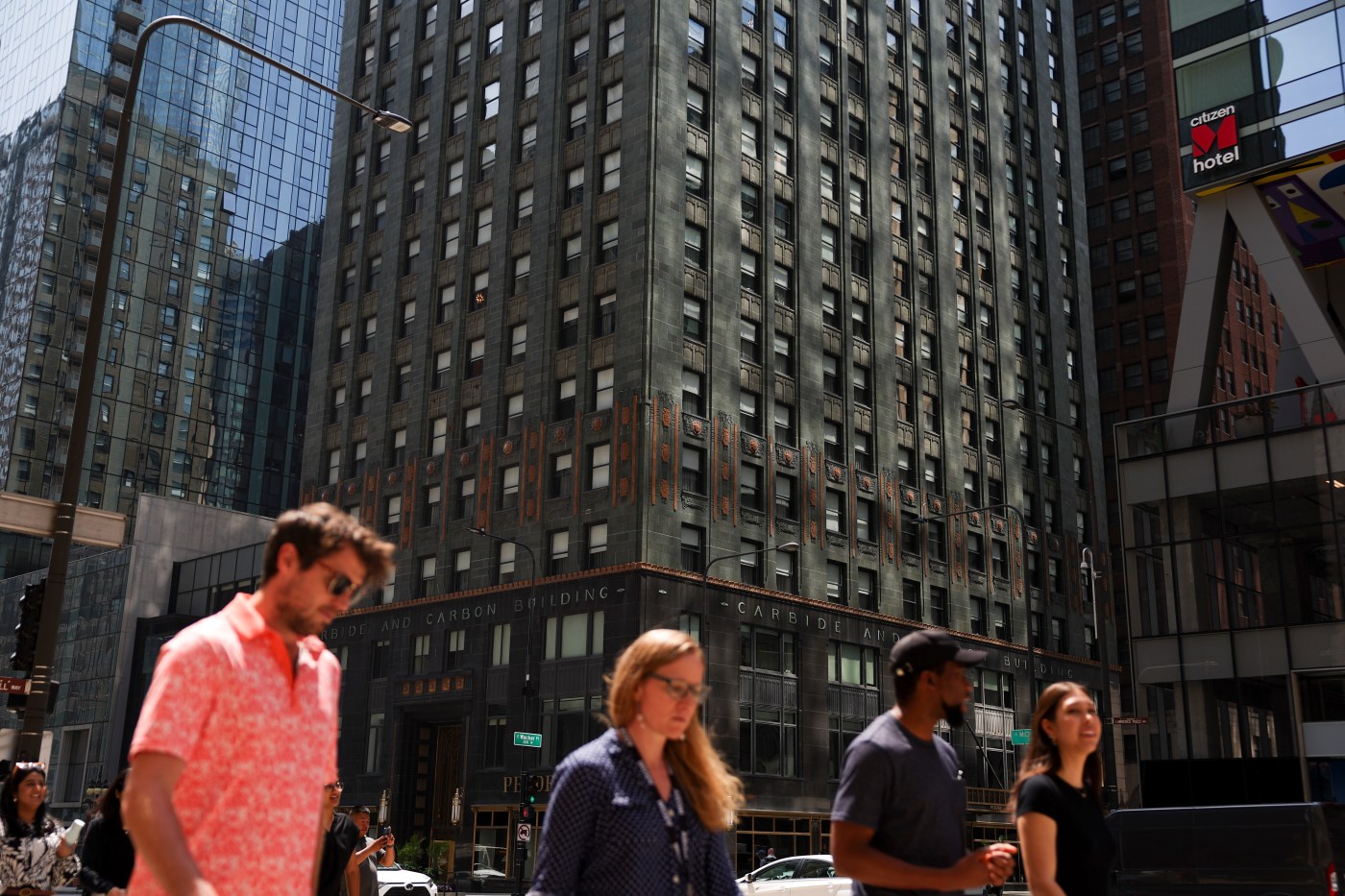UPDATE: Chicago’s historic buildings are undergoing a dramatic transformation as they are converted into trendy hotels, attracting a surge of visitors eager for unique accommodations. This trend is reshaping the city’s hospitality landscape, giving travelers a taste of Chicago’s rich history while staying in the heart of the action.
The recent shift has caught the attention of architecture enthusiasts and tourists alike. July 29, 2025 marks a pivotal moment as numerous hotels have opened their doors in renovated landmarks. The Kimpton Gray Hotel, housed in the former New York Life Insurance Building, exemplifies this movement. This striking 14-story structure, a Chicago landmark since 2002, showcases a stunning Georgia Gray marble staircase and ornate lobby, making it a popular spot for weddings and proposals.
Eleanor Gorski, CEO of the Chicago Architecture Center, emphasizes the appeal of these historic hotels. “They offer travelers a unique glimpse into the city’s past,” she states, noting their prime locations and easy access to public transport. With many buildings repurposed from their previous lives as office spaces, factories, and even casket makers, each hotel tells a story.
Architectural firm Gensler is at the forefront of this revitalization, focusing on breathing new life into these structures. Lori Mukoyama, a principal at Gensler, highlights the charm of these buildings, stating, “Their unique architectural features offer opportunities for creative and memorable design solutions.” The renovation of the Kimpton Gray required intense exterior restoration to meet local landmark commission standards while preserving its historical essence.
The trend is not just aesthetically pleasing; it also supports local economies. Gorski points out that many of these buildings were previously underutilized or in disrepair. Developers seized the opportunity to acquire them at lower prices, thanks in part to the county’s Class L Property Tax Incentive. This program encourages the rehabilitation of historic structures, offering significant tax breaks for qualifying projects. Gorski notes that the hotel boom post-2006 was fueled by this incentive, creating a perfect storm for development.
As the trend continues, hotels like the Hampton Inn, located in the former Chicago Motor Club Building, exemplify the adaptive reuse of historic properties. Opened in 1928, with art deco features and a three-story lobby mural, the hotel has become a testament to Chicago’s architectural heritage.
The environmental impact of these conversions is also significant. Gorski explains that repurposing old buildings reduces carbon emissions associated with new construction. Mukoyama adds that retrofitting these structures can significantly improve energy efficiency, making it an economically sound choice as well.
As Chicago embraces this trend, it reflects a broader global movement towards sustainable development. Hotels are not just places to stay; they are integral to revitalizing neighborhoods and enhancing tourism. Mukoyama asserts, “These projects create spaces that feel authentic and are rooted in place, making them travel-worthy destinations.”
For visitors seeking unique accommodations in Chicago, these historic hotels offer an experience unlike any other. With rich histories and character, they are not just places to stay; they are part of the city’s ongoing narrative.
What’s next? As more buildings are transformed into hotels and apartments, the Chicago City Council continues to support adaptive reuse initiatives. The LaSalle Street Reimagined project is set to receive $65 million in tax increment financing, paving the way for more innovative developments that honor the city’s architectural legacy while meeting modern needs.
Stay tuned as this story unfolds and more historic buildings join the ranks of Chicago’s vibrant hotel scene!
